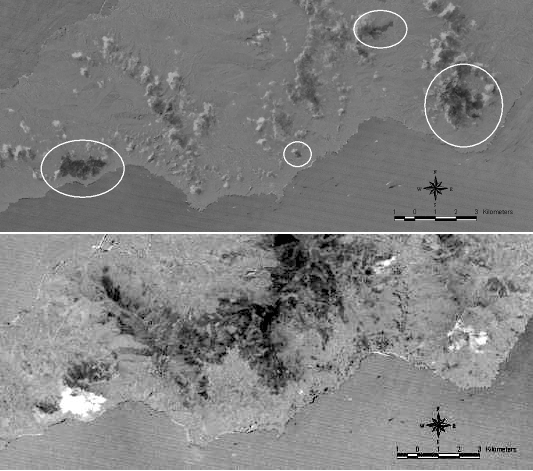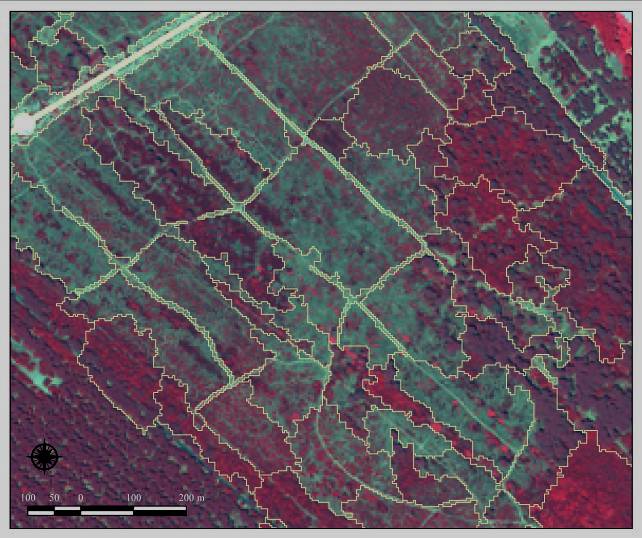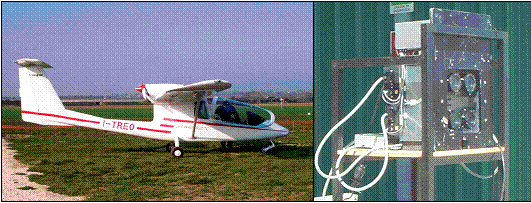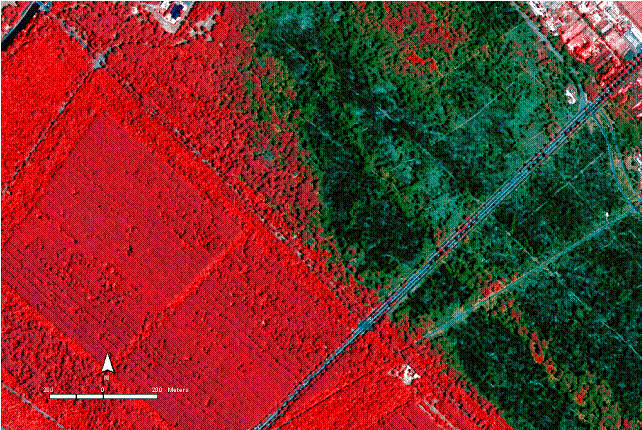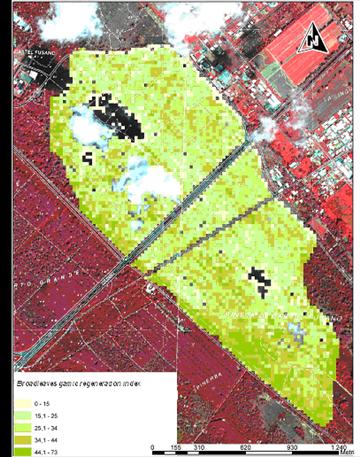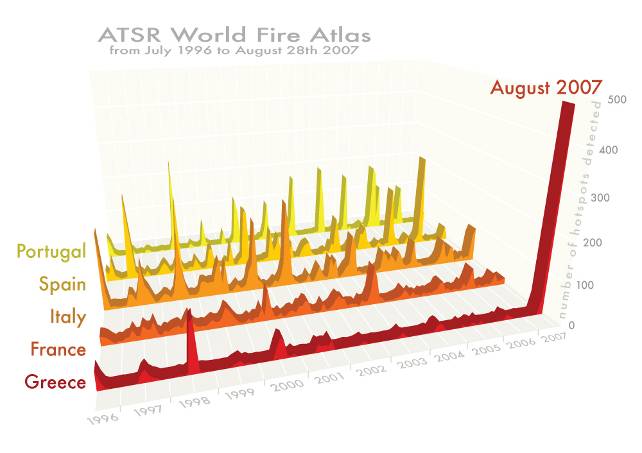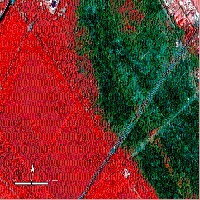
Remote sensing support for post fire forest management
iForest - Biogeosciences and Forestry, Volume 1, Issue 1, Pages 6-12 (2008)
doi: https://doi.org/10.3832/ifor0305-0010006
Published: Feb 28, 2008 - Copyright © 2008 SISEF
Review Papers
Abstract
Monitoring of forest burnt areas has several aims: to locate and estimate the extent of such areas; to assess the damages suffered by the forest stands; to check the ability of the ecosystem to naturally recover after the fire; to support the planning of reclamation interventions; to assess the dynamics (pattern and speed) of the natural recovery; to check the outcome of any eventual restoration intervention. Remote sensing is an important source of information to support all such tasks. In the last decades, the effectiveness of remotely sensed imagery is increasing due to the advancement of tools and techniques, and to the lowering of the costs, in relative terms. For an effective support to post-fire management (burnt scar perimeter mapping, damage severity assessment, post-fire vegetation monitoring), a mapping scale of at least 1:10000-1:20000 is required: hence, the selection of remotely sensed data is restricted to aerial imagery and to satellite imagery characterized by high (HR) and, above all, very high (VHR) spatial resolution. In the last decade, HR and VHR passive (optical) remote sensing has widespread, providing affordable multitemporal and multispectral pictures of the considered phenomena, at different scales (spatial, temporal and spectral resolutions) with reference to the monitoring needs. In the light of such a potential, the integration of GPS field survey and imagery by light aerial vectors or VHR satellite is currently sought as a viable option for the post-fire monitoring.
Keywords
Burnt scar perimeter mapping, Post-fire vegetation monitoring, Damage severity assessment, High and very high spatial resolution satellite sensors
Introduction
Designing post-fire management (reclamation and restoration interventions, etc.) in forest burnt stands requires the functional and structural assessment of the landscape mosaic and of the size and behaviour of the considered wildfires. In this framework, monitoring may have several aims to support post-fire management: to locate and estimate the extent of the burnt areas (burnt scar perimeter mapping: e.g., [14], [28], [19]); to assess the damages suffered by the forest stands (e.g., [22]); to check the ability of the ecosystem to naturally recover after the fire (e.g., [18], [12], [25]); to support the planning of reclamation interventions; to assess the dynamics (pattern and speed) of the natural recovery (e.g., [30], [10]); to check the outcome of any eventual restoration intervention (e.g., [27]).
Remote sensing is a relevant source of information to support all such tasks. However, it must be taken into account that in most Mediterranean countries the average size of forest fires (1980-2005) is currently less than 10 ha. In European central and northern countries the average burnt area is even much smaller, generally less than 1 ha ([13]).
During the last summer (year 2007) in the Mediterranean area, especially in Greece and in Italy, a lot of wildfires occurred with a significant impact because of the wide range of economic, political, social and ecological values at stake. At the end of August 2007, Greece asked to activate the International Charter "Space and Major Disasters", where national space agencies and private satellite companies make available remotely sensed data to quickly manage human or natural disasters. In the light of this, satellite images with low (e.g., Noaa Avhrr, Modis, Spot-Vegetation) or medium (e.g., WiFS-IRS) spatial resolutions may be exploited for monitoring the largest wildfires, as, for instance, it is carried out by the European Forest Fire Information System (EFFIS, see [13]) whit reference to those ones larger than 50 ha using Modis satellite images.
As concerns post-fire forest management, a mapping scale of at least 1:10000-1:20000 is required for an effective support to operational measures like legal constraints enforcing and reclamation and restoration interventions: hence, the selection of remotely sensed data is restricted to aerial imagery and satellite imagery characterized by high (e.g., Spot HVR, IRS LissIII, Aster) and, above all, very high (aerial imagery, Ikonos, QuickBird, Spot 5 and the upcoming WorldView-1 and GeoEye-1) spatial resolution.
For instance, in Italy the national regulation about forest fires (National Law no. 353/2000) requires the implementation of a cadastral geodatabase of the burnt areas. For such a purpose, the boundary of all the burnt forest stands have to be overlaid with digital cadastral maps in order to identify land ownership and to prevent possible illegal post-fire activities such as land use changes (typically, for grazing or settlements). In this context, the Italian National Forest Service has decided to map burnt forest stands at a scale of at least 1:5000 (minimum mapping unit equal to 625 m2), in addition to the historical archives censued since 1970.
The aim of this note, which update and widen a previous overview ([5]), is to selectively present, as a commentary discussion, relevant experiences in exploiting remotely sensed imagery to operatively support post fire management, with distinctive reference to burnt scar perimeter mapping and damage severity assessment, by case studies mainly from Italy.
Burnt area mapping
Detailed burnt area mapping (reference scales: 1:5000-1:25000) may be operatively based on: exclusive use of field data (GPS, laser station, etc.), exclusive use of remotely sensed data, data integration (remotely sensed + field data).
Field-based survey
Burnt scar perimeter mapping based on field work only (walking along the boundaries of the burnt area with a GPS device) is theoretically the best option, being a rather objective way to directly acquire the field truth. However, such an approach may have several shortcomings: possible technical problems from GPS, e.g., because of radio signal lacking due of satellite position; residual vegetation coverage; orography; rainfall; etc.; difficulties in identifying burnt scar perimeter in the case of patchy fires; low accessibility for a safe work of the field team; large extension of the burnt stands.
When such shortcomings becoame operatively relevant, then the following options for the field work may be considered:
- field mapping based on digital orthophotos supported by a digital based topographic map (at least at 1:10000 scale) loaded on a palm or tablet PC connected with GPS: in a standard GIS environment the operator can digitise manually the boundary of the fire visually localized;
- proximal sensing: the method is based on the availability of a multiple station made by a GPS and a laser collimeter connected together by a palm or tablet PC; the operator, located on a favourable point of view, looks at the burnt area, registers its position by GPS and then acquires the coordinates of some relevant points of the burnt area with the laser instruments; such a procedure is particularly suitable in case of low accessibility on the burnt stand, when fire boundary is rather regular or even in the case of patchy fires (in latter case, a distant point of view can simplify the identification of the scar perimeter); however, the procedure requires specific equipment and technical skill and it has to be carried out just after the event, especially under Mediterranean conditions where vegetation regrowth is very fast.
Remote sensing-based survey
Burnt areas have a typical spectral signature, especially if analysed by a multitemporal approach, because of the different ground coverage between pre-fire (vegetation) and post-fire (white ash, black ash, bare soil, dead vegetation) conditions ([20]).
Aerial photography has an high efficiency potential for detecting and delineating burnt areas, especially in the case of light aerial vectors and in the case of sensors capturing infrared (IR) and near infrared (NIR) reflectances. However, in the last decade the most growing segment of remote sensing is that of passive (optical) multispectral imagery from satellites for earth observation (EO), due to the relative lowering of the costs and increasing spatial resolution ([32]). Almost all the different types of available passive and active EO imagery have been tested for experimental tests and/or for developing operative services for fire risk forecasting, near real time alarm and support for fire fighters, burnt area mapping, quantification of burnt biomass, evaluation of fire severity and damage assessment, and vegetation regrowth monitoring.
As mentioned, for most post-fire operational applications, high (HR) and, above all, very high (VHR) resolution data are particularly suitable today: they are characterized by improved information depth (over 8 bit per pixel per spectral band), fairly high signal-to-noise ratios and allow mapping with a consistent geometrical reliability for management purposes (e.g., panchromatic: 10 m for Spot HRV; 6 m for IRS-1C and Spot 4; 2.5 m for Spot 5; ≤1 m for Quickbird and Ikonos; ≤0.5 m for the upcoming WorldView-1 and GeoEye-1).
Image classification methods may be based on manual photointerpretation or on automatic/semiautomatic image processing algorithms ([15], [21]). The approach may be mono-temporal, based on the acquisition of just a single post-fire image, or multi-temporal, based on the acquisition of at least two images, one pre-fire and one post-fire.
Monotemporal approach is relatively cheap and of easy technical implementation. However, the identification of burnt areas may be difficult if the image is acquired during the spring or it is temporally distant from the event. In such situations, the vegetation regrowth may change the spectral signature of the burnt area which may become similar to that of the surrounding unburnt land cover. Classification problems may also arise when forest and non-forest fires have to be distinguished. The monotemporal approach is commonly applied by HR/VHR data. Distinctively, object oriented-based techniques can significantly improve the detection of burnt area mapping by VHR data ([16], [23], 2006). In the case of medium-low resolution data (pixels of size between 180-250 m and 1 km), burnt areas pixels frequently have a mix signature with averaged digital numbers corresponding also to unburnt ground coverages.
In the case of multitemporal approach, based on the acquisition of (at least) two images (pre- and post-fire), the identification of burnt area is as easier as the post-fire image is acquired temporally closer to the event. The classification of the area based on the type of vegetation burnt is more feasible than the monotemporal approach. However, the multitemporal method is more expensive and technically complex to be implemented, since all the images have to be geometrically co-registered and spectrally normalised.
Multitemporal low and medium resolution EO data are frequently used for monitoring big forest fires over large territories (e.g. [29], [9]). HR/VHR imagery is usually exploited to support post-fire management by: (i) comparison of the digital numbers from selected bands or their combination (vegetation indices), before and after the fire; (ii) comparison of the classifications independently carried out before and after the fire.
Beyond the well known NDVI (Normalized Difference Vegetation Index) and IRI (Infrared Index), which exploit the reflectances in the red and NIR bands, the most effective vegetation indices for forest burnt area mapping prove to be NBR (Normalized Burned Ratio), based on red and SWIR bands, and NBRT, a modification of the latter which includes also the so called "scaled brightness temperature" derived from the thermic band ([19]).
The multitemporal quantitative comparison can be normalised through the MNI index, ranging between -1 and +1, MNI = (imagepost - imagepre)/(imagepost + imagepre), where image is a vegetation index or the digital number of a given band, imagepost is acquired after the fire event and imagepre is acquired before the fire event. MNI index may be applied in order to identify burnt areas also on the basis of post-fire regrowth: acquiring imagepre just after the fire and imagepost some time after, in the resulting MNI image the burnt areas are usually characterized by significantly higher values than the surroundings ([5]).
Operative case studies
Cadastral geodatabases of burnt areas in Campania (Southern Italy)
Regione Campania has implemented a cadastral geodatabase of burnt areas for the years from 2000 to 2003 in order to answer legal specifications settled by the already mentioned Italian regulation on forest fires (Law no. 353/2000).
The mapping procedure was based on a two-step approach. In a first phase, for each year an unsupervised analysis of multitemporal Landsat 7 ETM+ imagery was carried out in order to identify those areas with a spectral behaviour compatible with a forest fire event. For such a task, the MNI index based on band 4 (NIR channel) of Landsat 7 ETM+ sensor was determined as the best tool for an unsupervised approach, confirming previous experiences ([2]). In the MNI image, burnt areas have lower values than unburnt ones because of decreased level of photosynthetic activity (Fig. 1). However, such a spectral behaviour is compatible also with other events such as forest clearcuttings that, on the other hand, may be distinguished because of their regular geometric shapes. For each year of analysis several MNI images were elaborated in order to automatically identify burnt areas also on the basis of post fire photosynthetic decrease and regrowth photosynthetic increase. The final result is a reliable database of possible burnt areas.
Fig. 1 - Example of the behaviour of MNI index to identify burnt forest stands in Campania (Central Italy) by the near infrared band from Landsat 7 ETM+ images. Above, MNI index elaborated from a post-fire image acquired the 2nd of August 2000 and a pre-fire image acquired the 1st of July 2000: the areas with lower photosynthetic activity are darker. Below, MNI index for the same area from a post-fire image acquired the 2nd of August 2000 and an image acquired during the following growing season (1st of May 2001): the areas with increasing photosynthetic activity are lighter. White circles in the above image identify the burnt areas.
In the second step, each possible burnt area were assessed also combining the geodatabase of field surveys acquired by the National Forest Service. If a possible fire was confirmed by official field report, the perimeter of burnt area was digitised manually at a reference scale of 1:10000 on the basis of digital orthophotos, yearly acquired, and digital topographic maps. The resulting final geodatabase of burnt areas was finally overlayed with digital cadastral maps in order to identify landowners for the application of the National Law no. 353/2000. A total number of 19 Landsat images was elaborated in order to identify 2080 forest fires, for a total burnt area, in four years, of 23068 ha ([17]).
European Forest Fire Rapid Damage Assessment System
At the European level, the EFFIS service (see Introduction) analyses a multitemporal database of medium resolution EO images to map forest fires larger than 50 ha for each Mediterranean country (Portugal, Spain, France, Italy, Greece), every year. All the information is stored in a module referred to as EFFIS Rapid Damage Assessment (RDA) and it performes the evaluation of damages at least twice during a fire campaign. The service is implemented by the Joint Research Centre of the European Commission of Ispra (EC-JRC) since 1997 supporting the Forest Focus regulation (EC-2152/2003) ([13]).
The RDA procedure is based on the multitemporal analysis of MODIS images acquired during the vegetation season in order to identify the events. In a second step, burnt areas boundaries are overlaid with Corine Land Cover vector database to identify burnt land covers. For each country quantitative relationships have been established between fire statistics from national authorities and large forest fires mapped by RDA module. Hence, the EFFIS RDA system is able to estimate yearly the total forest burnt area on a national level for the considered countries, with good accuracy ([13]). However, the produced figures have only a statistical meaning, and even for large fires they cannot be used for burnt area monitoring at the detailed scale required by post fire management (legal framework, reclamation and restoration activities, etc.).
Object-based approach
Object-based techniques are particularly efficient to exploit the information by HR/VHR remotely sensed data ([1]). They have been successfully used to accurately map burnt forest stands in many Mediterranean areas. Mitri & Gitas ([24]) developed an object-oriented model using a post-fire Ikonos imagery of Thasos island (Greece) to distinguish between surface and canopy burn by a monotemporal approach: the overall accuracy of classification was 0.87. A similar level of classification accuracy is reported by Chirici & Corona ([6]) with reference to events occurred in northern Latium (central Italy) assessed by MNI index applied to multitemporal QuickBird images. Chirici et al. ([7]) also report the remote sensing assessment of post-fire forest recovery after a large wildfire occurred in the Cilento National Park (Southern Italy); the recovery dynamics was monitored by various approaches applied to multitemporal Landsat images from 1993 to 2004: the most accurate results were obtained by multiresolution segmentation and object-oriented classification, compared to pixel-based approaches. De Matteo et al. ([11]) reported the possible operative use of segmentation techniques applied to QuickBird post-fire imagery in Alpine areas, with errors ranging from 3 to 20% in respect to field assessment.
Fig. 2 shows an example of multiresolution segmentation of an Ikonos image of a Mediterranean forest stand six years after the fire. The obtained segments (polygons) delineating different patches of recovering vegetation are of direct support for stratification of restoration planning (no intervention, seeding, planting, etc.).
Fig. 2 - Multiresolution segmentation of an Ikonos image of burnt forest stands after six years from the event (Castel Fusano, Rome, Italy).
Damage assessment
Multispectral remotely sensed images are of great potential for classifying and mapping the severity of fire damages to forest vegetation. The overall view of the burnt areas and the possibility of analyzing multispectral reflectance make such imagery able to detect and qualify damages even better than visual assessment by field teams ([15], [31]).
Aerial assessment: the SIMiB project
The SIMiB project (System for Mapping Forest Fires), funded by the Italian National Forest Service, has tested the Duncan MS4100 (Duncan-Flir-Riegl) sensor, a multispectral tool carried by an aerial light vector (SKY-ARROW 650TC). The sensor is based on three CCD cameras active in the visible and near-infrared bands and one active in the thermal infrared band. Infrared false colour digital images are produced and orthocorrected with a nominal accuracy of ± 1 m in order to identify burnt area boundary, to map damage levels and to estimates emissions of CO2 caused by forest fire and hypotethical recoils on Kyoto Protocol ([3]). An example of a similar device suitably carried by light aerial vector for post-fire assessment is the ASPIS sensor (Fig. 3) developed by the University of Tuscia (Italy). The methodology has proven to provide successfully monitoring results over 2000 km2 in Central Italy (Lazio) allowing to map forest burnt areas with an accuracy compatible with 1:10000 scale level. Remote sensing by aerial light vectors can be efficiently (in terms of imagery quality and cost) used to map and qualify with high accuracy damages on distinctive spots, and it is also particularly suitable for calibrating remotely sensed imagery of lower geometric resolution ([26]).
Damage assessment by VHR satellite imagery
Data acquired by the first commercial VHR satellite (Ikonos) were exploited in the framework of post-fire forest management activities carried out in the woodland of Castelfusano (Rome, Italy) after the crown fire occurred on July 2000. A damage severity map was elaborated interpreting NIR false color and NDVI images derived by a Ikonos image acquired on the 20th of August 2000, integrated by GPS based ground survey. The following damage classes have been mapped: no damage (class 0); damages prevalently due to surface fire, most of vegetation of lower layers is damaged but most part of top canopy is undamaged (class 1); dominant top canopies are partially damaged, or the fire is patchy and damaged and undamaged areas are mixed together in a mosaic of elements smaller than the minimum mapping size of 0.5 ha (class 2); most of tree vegetation is significantly damaged by crown fire (class 3).
To support post-fire reclamation activities, a second map (precision logging map) was created pan-sharpening the NIR false color images elaborated by the composition of the bands 4, 3 and 2 (Fig. 4). The image had the resolution of the panchromatic channel (1 m), and it could be effectively overlaid to forest road and timber yarding network for supporting harvesting planning to remove burnt and partially unburnt material and to secure the area ([4]).
Fig. 4 - Pansharpened near-infrared Ikonos image acquired after the forest fire in the woodland of Castelfusano (Rome, Italy). Burnt areas are in green and black. Unburnt areas are represented by the red canopies, characterized by high photosynthetic activity.
Field assessment and attribute spazialization
The restoration of forest and other wooded land damaged by wildfires should be designed through the analysis of vegetation syndynamics and dendrostructural features of the residual stands.
For such tasks, the implementation of a network of field permanent geocoded sample plots is required to follow post-fire natural dynamics and regrowth effectiveness. The use of several small sample plots, of size around 10-20 m2 in burnt forest stands, is usually better than a few large plots, at least considering the monitoring just after the fire ([8]). Attributes to be measured are, for instance: deadwood; tree natural regeneration (sexual and vegetative); vegetation diversity.
Field inventoried data may be spatialized in order to produce map of the main interesting attributes, using parametric or non-parametric statistical tools, and, preferably, integrating independent information from remotely sensed images (e.g., through multiregression or k-Nearest Neighbour procedures).
An example of the application of a parametric correlation method to describe the post-fire broadleaves tree regeneration in the Castelfusano forest is presented in Fig. 5. Post-fire natural regeneration mapping was carried out integrating GPS geocoded field data collected in 178 rectangular transects of 20 m2 each with spectral data from a QuickBird image. Information acquired in the field were related to spectral data of the QuickBird image and to soil types in order to establish a statistical relationships for spatializing a tree regeneration index. A multiple linear stepwise regression procedure was succesfully applied: band 4 and SAVI (Soil Adjusted Vegetation Index) from QuickBird imagery resulted as the most significant predictors of the broadleaf sexual regeneration in the considered area.
Fig. 5 - Broadleaves natural regeneration index (gamic regeneration) spatialised on the basis of a multiregression analysis by QuickBird post-fire image and field data in the Castelfusano woodland (Rome, Italy).
Selected ongoing applied developments
Research in the field of remote sensing technology applied to support forest fire fighting (risk prediction, early detection) and monitoring has been rather active in the last decades. Most of the efforts are focused on large fires, as those carried out at EC-JRC leading to the mentioned EFFIS RDA service. However, it is deemed interesting to give here some selected hints on other ongoing applied research programs: more detailed information can be found on many Internet websites.
European Space Agency (ESA) developed a multi-year global fire atlas (ATSR World Fire Atlas) starting in the 1995 and based on data acquired by the Along Track Scanning Radiometer (ATSR) sensor on ERS-2 satellite, launched in 1995, and the Advanced Along Track Scanning Radiometer (AATSR) sensor on Envisat satellite, launched in 2002. Burning fires are classified measuring thermal infrared radiation at night by ATSR/AATSR sensors. These data are available to registered users online in near-real time (ESA asserts approximately six hours after the acquisition - Fig. 6).
Fig. 6 - ATSR World Fire Atlas. Number of fires occurring monthly for France, Italy, Spain, Portugal and Greece from July 1996 to August 2007. Source: European Space Agency, 2007. [online: september 2007] URL: http:/www.esa.int/images/stats_H.jpg.
As part of the GMES Service Elements Initiative of ESA, the Risk-Eos team defines, develops and delivers a set of experimental services for flood and fire risks management, utilizing the capabilities of satellite observation in combination with other data sources and models: the target is to map burnt areas and monitoring of vegetation evolution with decametric resolution (minimum mapping unit = 1 ha). This service is currently delivered over various regions of Spain, France and Italy, in particular burn scar mapping is delivered in Basilicata, Sicilia and Sardegna region covering an area of 60000 km2. Complement to burn scars mapping is the rapid mapping products for large fires to support the International Charter for major events and local collectivities.
Potentially relevant activities are those by the COSMO-SkyMed project developed under the responsibility of the Italian Space Agency. The service is based on a minisatellite constellation (4 medium-size satellites), equipped with a microwave high resolution synthetic aperture radar (SAR) operating in X-band, designed to pick up data of environmental interest with frequent revisiting time. The system will be devoted to the civil protection, environmental and climate monitoring, prevention of the catastrophes, control of the coasts, soil conservation, etc., mainly for the area of the Mediterranean (prevention, alarm, crisis management, post-crisis tools). The first two satellites were successfully launched on June 2007, while the launch of the other two satellites will be completed within the early 2009.
In the United States, fire fighting strategy is based on the idea of concentrating all the possible efforts to implement a unique coordinated service. The Geological Service coordinates the development of the Wildland Fire Support, an information service devoted to collect all data useful for prevention, alarm and monitoring of wild fires. The service is available on-line (http://www.geomac.gov) both for the citizens interested in having information of forest fires and for fire fighters who may also upload data from field monitoring. Near-real time monitoring programme, based on Modis and Noaa-Avhrr data, acquires daily images to identify hot spots and to monitor large events. Mapping activities are prevalently oriented to large fire monitoring because fire events in the USA cover frequently very large wild areas of difficult accessibility.
Conclusion
The last International Wildland Fire Conference held in Sevilla (Spain, May 2007) has once more stressed the importance of proper strategies for post fire management based on sound monitoring, not only to pinpoint the actual consequences of wildfires on land cover, land use and the environment (climate included) but also to support effective interventions fostering ecological and economical restoration of the struck territorial systems.
This note has highlighted the potential of consistent remote sensing tools for surveying and monitoring burnt forest areas. However, applied research is still required, distinctively to develop and refine procedures for monitoring small fires (smaller than 10 ha) over large territories, like those typical of most European countries (Mediterranean ones included). Moreover, the assessment of forest burnt area is not enough: the development of reliable tools for the quantitative assessment of forest damages, biomass loss and carbon emissions due to wildfires is to be significantly advanced.
Futhermore, from a practical side, future research efforts needs to be oriented towards an effective integration of available data sources. For instance, for the implementation of a national system for mapping forest burnt stands at 1:10000 scale in a country like Italy or Spain, the most effective current scenario might be the modular integration of GPS field surveys with targeted acquisitions (with respect to areas difficult to be field-surveyed because of low accessibility or GPS signal lacking or in the case of very wide and/or very patchy fires) of multispectral imagery by aerial light vectors or satellites carrying VHR sensors, even eventually coupled with targeted acquisitions (one at the beginning and one at the end of the fire season) by medium resolution satellite imagery on larger scales.
Acknowledgements
The work, carried out by the Autors in equal parts, has been partially funded by the Italian Ministry for Research and University under the project CarboItaly (FISR funds). The Authors thanks Agriconsulting S.p.A. for allowing the use of data presented in the paragraph “Cadastral geodatabases of burnt areas in Campania”.
References
Gscholar
Gscholar
Gscholar
Gscholar
Gscholar
Gscholar
Gscholar
Gscholar
Gscholar
CrossRef | Gscholar
Gscholar
Gscholar
Authors’ Info
Authors’ Affiliation
A Lamonaca
Dipartimento di Scienze dell’Ambiente Forestale e delle sue Risorse, Università della Tuscia, v. San Camillo de Lellis snc, 01100 Viterbo (Italy)
Dipartimento di Scienze e Tecnologie per l’Ambiente e il Territorio, Università del Molise, c.da Fonte Lappone snc, 86090 Pesche, IS (Italy)
Corresponding author
Paper Info
Citation
Corona P, Lamonaca A, Chirici G (2008). Remote sensing support for post fire forest management. iForest 1: 6-12. - doi: 10.3832/ifor0305-0010006
Paper history
Received: Oct 19, 2007
Accepted: Jan 23, 2008
First online: Feb 28, 2008
Publication Date: Feb 28, 2008
Publication Time: 1.20 months
Copyright Information
© SISEF - The Italian Society of Silviculture and Forest Ecology 2008
Open Access
This article is distributed under the terms of the Creative Commons Attribution-Non Commercial 4.0 International (https://creativecommons.org/licenses/by-nc/4.0/), which permits unrestricted use, distribution, and reproduction in any medium, provided you give appropriate credit to the original author(s) and the source, provide a link to the Creative Commons license, and indicate if changes were made.
Web Metrics
Breakdown by View Type
Article Usage
Total Article Views: 71353
(from publication date up to now)
Breakdown by View Type
HTML Page Views: 58187
Abstract Page Views: 4264
PDF Downloads: 7525
Citation/Reference Downloads: 102
XML Downloads: 1275
Web Metrics
Days since publication: 6470
Overall contacts: 71353
Avg. contacts per week: 77.20
Article Citations
Article citations are based on data periodically collected from the Clarivate Web of Science web site
(last update: Mar 2025)
Total number of cites (since 2008): 25
Average cites per year: 1.39
Publication Metrics
by Dimensions ©
Articles citing this article
List of the papers citing this article based on CrossRef Cited-by.
Related Contents
iForest Similar Articles
Research Articles
Evaluation of hydrological and erosive effects at the basin scale in relation to the severity of forest fires
vol. 12, pp. 427-434 (online: 01 September 2019)
Research Articles
Mapping the vegetation and spatial dynamics of Sinharaja tropical rain forest incorporating NASA’s GEDI spaceborne LiDAR data and multispectral satellite images
vol. 18, pp. 45-53 (online: 01 April 2025)
Review Papers
Remote sensing-supported vegetation parameters for regional climate models: a brief review
vol. 3, pp. 98-101 (online: 15 July 2010)
Research Articles
Assessing the performance of MODIS and VIIRS active fire products in the monitoring of wildfires: a case study in Turkey
vol. 15, pp. 85-94 (online: 19 March 2022)
Review Papers
Accuracy of determining specific parameters of the urban forest using remote sensing
vol. 12, pp. 498-510 (online: 02 December 2019)
Research Articles
COSMO-SkyMed potential to detect and monitor Mediterranean maquis fires and regrowth: a pilot study in Capo Figari, Sardinia, Italy
vol. 11, pp. 389-395 (online: 15 May 2018)
Review Papers
Remote sensing of selective logging in tropical forests: current state and future directions
vol. 13, pp. 286-300 (online: 10 July 2020)
Research Articles
Afforestation monitoring through automatic analysis of 36-years Landsat Best Available Composites
vol. 15, pp. 220-228 (online: 12 July 2022)
Research Articles
Rapid assessment of wind storm-caused forest damage using satellite images and stand-wise forest inventory data
vol. 6, pp. 150-155 (online: 08 April 2013)
Research Articles
Post-fire effects and short-term regeneration dynamics following high-severity crown fires in a Mediterranean forest
vol. 5, pp. 93-100 (online: 30 May 2012)
iForest Database Search
Google Scholar Search
Citing Articles
Search By Author
Search By Keywords

